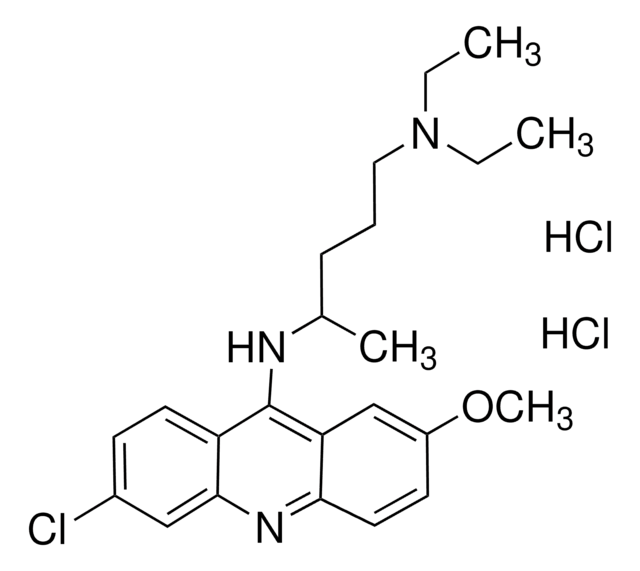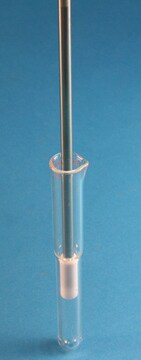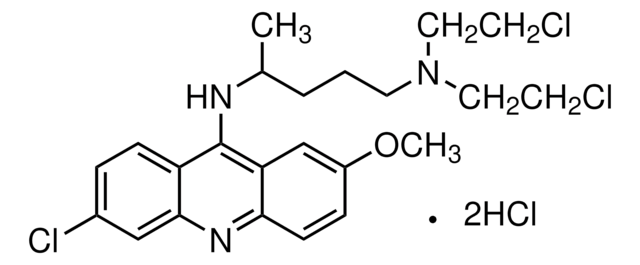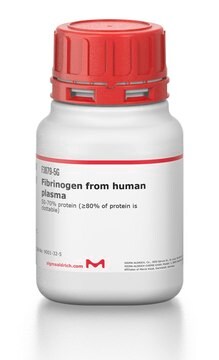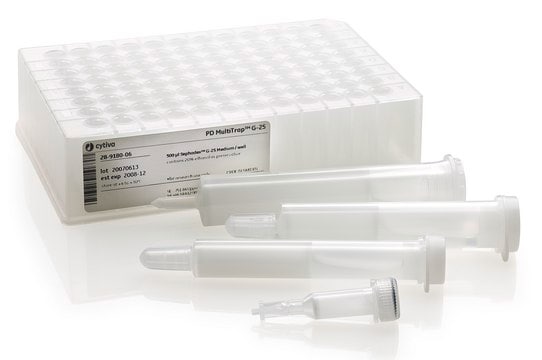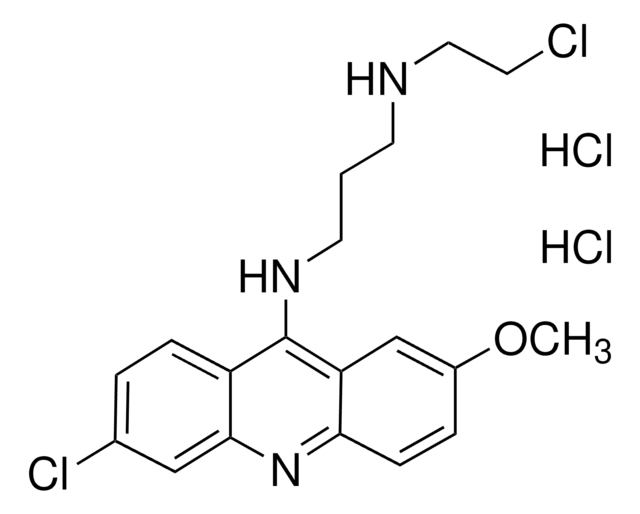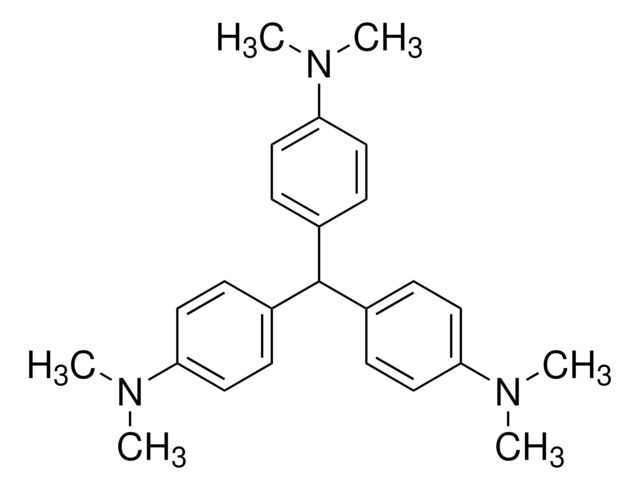Q3251
Quinacrine dihydrochloride
≥90% (TLC), powder, MAO-A/B inhibitor
Synonyme(s) :
6-Chloro-9-(4-diethylamino-1-methylbutylamino)-2-methoxyacridine dihydrochloride, Atebrin dihydrochloride, Mepacrine dihydrochloride
About This Item
Produits recommandés
product name
Quinacrine dihydrochloride, ≥90%
Source biologique
synthetic
Niveau de qualité
Pureté
≥90%
Forme
powder
Pf
257 °C
Solubilité
H2O: soluble, clear to hazy
Auteur
Bayer
Chaîne SMILES
Cl[H].Cl[H].CCN(CC)CCCC(C)Nc1c2ccc(Cl)cc2nc3ccc(OC)cc13
InChI
1S/C23H30ClN3O.2ClH/c1-5-27(6-2)13-7-8-16(3)25-23-19-11-9-17(24)14-22(19)26-21-12-10-18(28-4)15-20(21)23;;/h9-12,14-16H,5-8,13H2,1-4H3,(H,25,26);2*1H
Clé InChI
UDKVBVICMUEIKS-UHFFFAOYSA-N
Informations sur le gène
human ... MAOA(4128) , MAOB(4129)
Vous recherchez des produits similaires ? Visite Guide de comparaison des produits
Description générale
Application
- in its uptake and accumulation studies in mouse lung slices using fluorescence microscope
- in the staining of ATP vesicles in mesenchymal stem cells (MSCs)
- in uptake-release assay for characterization of dense granule functionality of platelets
Actions biochimiques/physiologiques
Caractéristiques et avantages
Stockage et stabilité
Autres remarques
Mention d'avertissement
Warning
Mentions de danger
Conseils de prudence
Classification des risques
Acute Tox. 4 Oral
Code de la classe de stockage
11 - Combustible Solids
Classe de danger pour l'eau (WGK)
WGK 3
Équipement de protection individuelle
dust mask type N95 (US), Eyeshields, Gloves
Certificats d'analyse (COA)
Recherchez un Certificats d'analyse (COA) en saisissant le numéro de lot du produit. Les numéros de lot figurent sur l'étiquette du produit après les mots "Lot" ou "Batch".
Déjà en possession de ce produit ?
Retrouvez la documentation relative aux produits que vous avez récemment achetés dans la Bibliothèque de documents.
Les clients ont également consulté
Notre équipe de scientifiques dispose d'une expérience dans tous les secteurs de la recherche, notamment en sciences de la vie, science des matériaux, synthèse chimique, chromatographie, analyse et dans de nombreux autres domaines..
Contacter notre Service technique